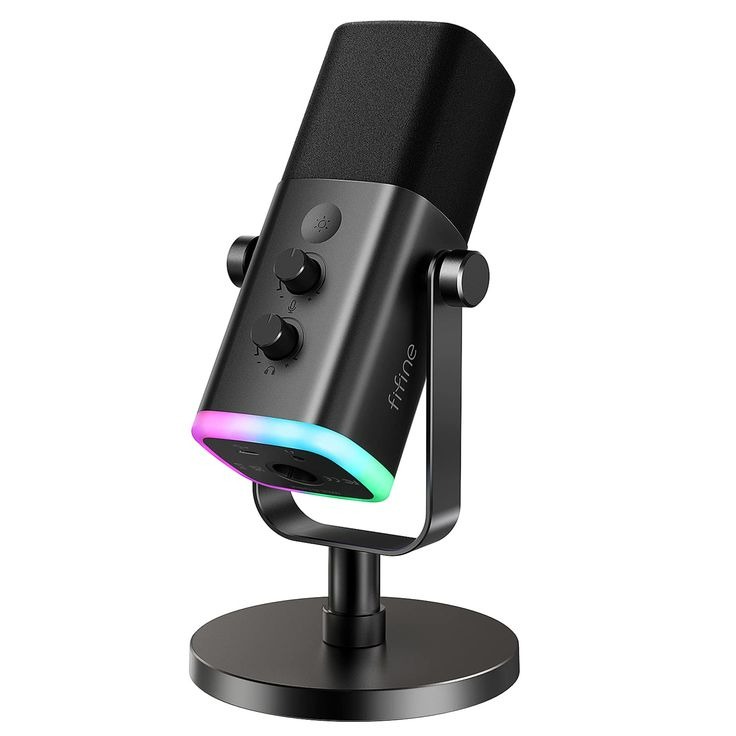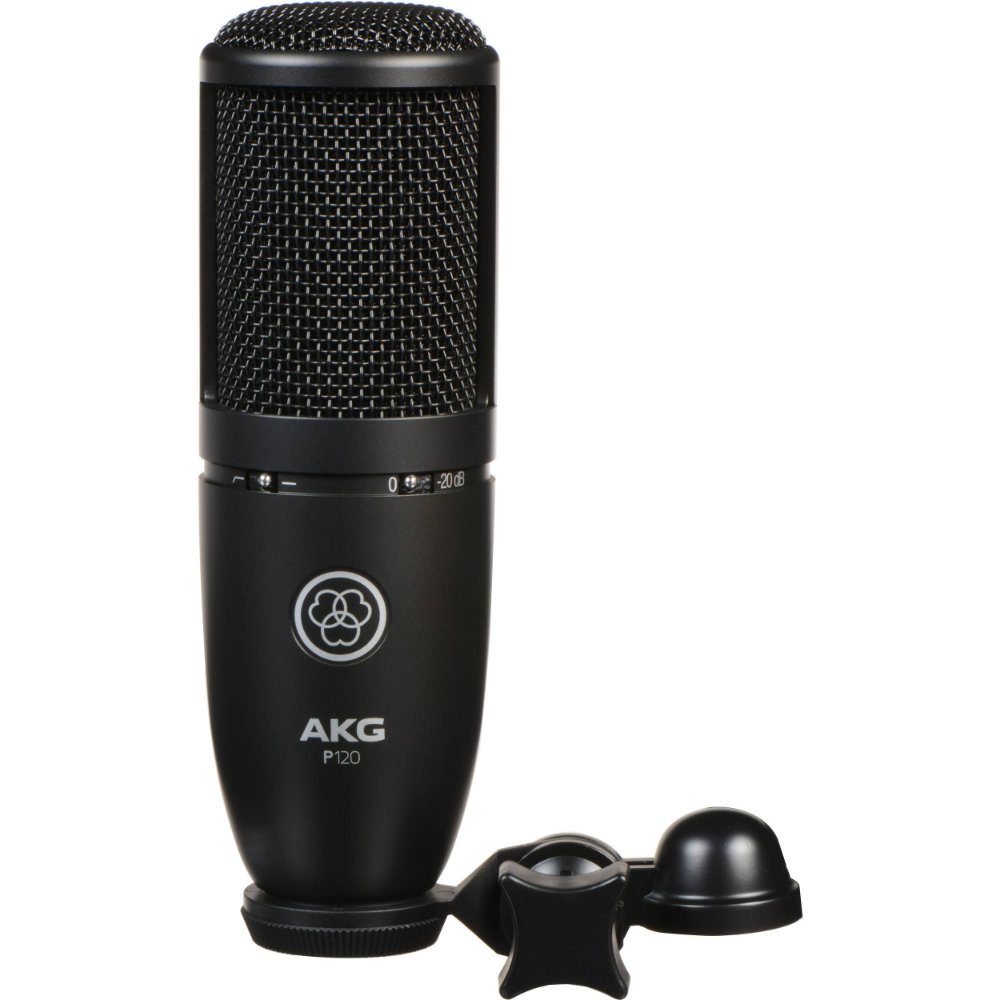Introduction to High-Fidelity Audio
High-fidelity audio refers to sound reproduction that is very close to the original. The term ‘high-fidelity’ or ‘hi-fi’ signals superior sound quality. This level of audio captures the true essence and nuances of the source. Listeners experience sound that is crisp, clear, and free from distortion. For true audiophiles, high-fidelity audio is non-negotiable.
To achieve this pristine sound, every component in the audio chain must be top-notch. This includes the microphones used to record the initial sounds. A mic plays a pivotal role here. It acts as the first point of contact for sound waves. This means that the quality of the mic directly impacts the final audio output. A poor-quality mic can introduce noise, coloration, and distortion. In contrast, a high-fidelity mic captures sound accurately. It ensures that what you hear is as close as possible to what was originally played or spoken.
Understanding the importance of a mic in maintaining audio fidelity is crucial. Professionals and hobbyists alike should be aware of how a mic can make or break the sound quality. This awareness guides their choices when it comes to selecting audio equipment. Clarity, depth, and detail are the hallmarks of high-fidelity audio. And that journey begins with the right microphone. In the upcoming sections, we’ll delve deeper into the different types of microphones. We’ll also explore how each type can affect the sound quality in various recording scenarios.

Different Types of Microphones
When considering high-fidelity audio, understanding the different types of mics is crucial. Each type has unique features and applications where it excels. Let’s dive into the main varieties and their impact on sound quality.
Dynamic Microphones
Dynamic mics are robust and versatile. They handle high volume levels well. These mics use a moving coil magnetic diaphragm. They’re great for live sound and instrument recording. Their sturdy build makes them a top choice for touring and on-stage use.
Condenser Microphones
Condenser mics have a lighter diaphragm. They respond to sound waves more accurately. This makes them ideal for capturing vocal subtleties and high frequencies. They require phantom power but deliver a broader frequency response, which is key in a studio setting.
Ribbon Microphones
Ribbon mics offer a vintage sound. They have a thin metal ribbon that responds to sound velocity. These are perfect for capturing warm, natural audio. Their figure-eight pattern picks up sound from the front and back, giving a unique spatial quality.
USB Microphones
USB mics are a good option for home studios and podcasters. They are easy to use with computers. They often integrate an audio interface within the mic itself, simplifying the recording chain. While not always the best for high-fidelity audio, their convenience is unmatched.
Each type of mic adds a distinct touch to the final audio output. When it comes to high-fidelity audio, the choice of a mic can greatly influence the clarity and quality of sound. Whether in a studio or a live setting, selecting the right type of microphone is a key step in ensuring the highest audio fidelity.

How Microphones Affect Sound Quality
A mic’s impact on sound quality is significant. It’s the first tool that sounds encounter. The microphone’s quality sets the basis for the audio’s clarity, richness, and detail. Let’s explore how different aspects of a microphone influence sound quality.
Microphone Build Quality
Good build quality ensures durability and better performance. A well-built mic will better preserve the sound’s natural characteristics. High-fidelity microphones often feature sophisticated design. This minimizes sound coloration and distortion.
Diaphragm Sensitivity
The diaphragm is a mic’s heart, where sound waves become electrical signals. A sensitive diaphragm captures more nuances. This leads to more detailed and vibrant recordings. In high-fidelity mics, diaphragm precision is a priority.
Frequency Response
A mic’s frequency response affects how it captures high and low tones. For high fidelity, a wide and flat frequency response is essential. It means the mic records all frequencies evenly, without boosting or cutting any range.
Polar Patterns
The polar pattern determines where a mic picks up sound. Different patterns suit different recording situations. Cardioid patterns are common in high-fidelity mics. They focus on sound from the front, reducing unwanted background noise.
Signal-to-Noise Ratio
A high signal-to-noise ratio is crucial for clean recordings. It ensures the mic captures more of the intended sound and less noise. For high-fidelity audio, a mic should have a low noise floor.
Selecting a microphone with these qualities is fundamental for achieving high-fidelity audio. The right mic captures sound in its purest form. It lays a strong foundation for the audio production process, resulting in clear, accurate sounds that are true to the original source.

Characteristics of a High-Fidelity Microphone
When diving into the realm of high-quality audio, acknowledging the characteristics that define a high-fidelity microphone is essential. Here’s a look at the crucial traits that set these mics apart.
Premium Materials
Microphones built with premium materials often exhibit superior sound capturing abilities. They maintain the integrity of the audio signal.
Advanced Diaphragm Technology
A high-fidelity mic has an advanced diaphragm. This captures audio with exceptional precision, leading to exquisite sound detail.
Wide Frequency Range
Such mics boast a wide frequency range. They can capture both the deep bass and the highest notes, ensuring a natural sound.
Low Self-Noise
High-fidelity mics have low self-noise. This means they add minimal hiss or hum to recordings, which is ideal for a clear output.
Consistent Polar Patterns
Consistency in polar patterns ensures that the expected sound capture zone is precise. This avoids undesired noise from surrounding environments.
High Dynamic Range
These mics handle variations in loudness with ease. Thus, they deliver recordings that reflect the true dynamics of the sound source.
Robust Construction
They are built to last. A mic that stays true to its form and function over time provides a reliable high-fidelity experience.
Selecting a microphone that embodies these characteristics is vital. It ensures that every subtlety, every tone, is authentically reproduced. For audiophiles and professionals, these traits are non-negotiable in their pursuit of high-fidelity audio.
The Role of Microphones in Audio Recording
The role of microphones in audio recording is paramount. Think of a mic as the initial scribe that etches audio into form. It captures the performance, converting sound waves into electrical signals. The better the mic, the truer the recording to the original sound. In studios, a mic not only records music. It also captures voice-overs, foley, and effects critical to film and television. Podcasters rely on mics to deliver their message with clarity. Even in live settings, a mic’s job is to accurately relay the performance to the audience.
For music enthusiasts recording at home, a good mic can mean the difference between a demo that sounds professional and one that does not. In all cases, a mic is the gateway through which all audio must pass. Hence, selecting the appropriate microphone is a key decision. This selection impacts the entirety of the recording process and, ultimately, the listener’s experience. It’s essential to invest time in understanding which mic works best for the intended purpose. One must consider the environment, type of sound, and the desired outcome. Every choice in the mic selection process narrows the gap between what is heard and what was played or spoken. A well-chosen mic ensures high-fidelity, capturing all nuances intended by the artist.
Selecting the Right Microphone for High-Fidelity Recording
Choosing the right mic is key to high-quality audio. It ensures recordings capture sound faithfully. A suitable mic grabs every detail from the original sound. It means considering the mic’s build, sensitivity, and range. Also, it’s important for the mic to suit both the environment and audio source. For high-fidelity recording, these aspects are critical.
When selecting a mic, first consider the recording space. Home studios need different mics from large studios or stages. Reflect on the sound type as well. Is the focus on voice, instruments, or a mix? Each source has unique needs. For voices, a mic with clear high-frequency response works well. For instruments, consider how the mic captures dynamic ranges.
Check the mic’s specs for frequency response and polar patterns. A flat, wide frequency response will handle a broad range of sounds. Cardioid patterns reduce background noise, focusing on the source. A good signal-to-noise ratio also matters. It means the mic picks up less noise, more pure sound.
Remember the power requirements too. Condenser mics need phantom power, while dynamic mics do not. Also, consider the connectivity. USB mics are great for plugging straight into computers.
Take time to review and test different mics. Read reviews and seek advice from experienced audio professionals. They can share insights about various mics in practice. Testing the mic yourself, however, is the best way to understand its performance. This helps you make an informed decision and choose the best mic for your recording needs.
By carefully selecting a microphone, you can achieve the highest fidelity in your recordings. The right mic becomes an extension of your artistic vision. It captures the essence of sound, just as it is meant to be heard.
Technological Advancements in Microphone Design
Technology reshapes how we capture sound. Microphone design has seen big leaps over the years. These changes improve how a mic captures and reproduces audio. Let’s look at some key advancements.
Materials and Engineering
Modern mics use advanced materials. Engineers explore new alloys and compounds. This makes mics more sensitive and durable. We see mics that handle stress better without losing audio quality.
Digital Processing
Today’s mics often come with on-board digital processors. This helps to enhance the sound signal right from the start. They clear up noise, and balance audio levels even before it hits the recording software.
Wireless Technology
Wireless mics are now more reliable. They offer freedom of movement without signal loss. This is key for live performances and dynamic recording sessions.
Improved Circuitry
Circuit designs have improved. They now ensure clearer sound transmission. Advanced circuitry reduces interference, so we get a cleaner sound.
Noise Reduction Techniques
Manufacturers use sophisticated noise reduction tech. These methods cut down on unwanted background sounds. High-fidelity mics with this tech bring out the best in voice and instruments.
Versatile Polar Patterns
Mics today can switch between different polar patterns. This gives users more control. They can adapt the mic to various recording environments with ease.
Miniaturization
Mics are getting smaller without losing quality. Mini mics can fit into tight spaces and still pick up high-quality sound.
These advancements offer clearer, richer, and more detailed sound. They make sure mics can handle the demands of modern recording. For anyone serious about high-fidelity sound, keeping up with these tech changes is crucial. It guarantees that the recordings stay true to the original sound.
Conclusion: The Integral Role of Mics in Producing High-Quality Audio
Throughout this blog, we have seen how a mic is more than just a tool; it is the gateway to high-fidelity audio. From the robust dynamic mics to the sensitive condenser mics, each offers unique qualities to the recording process. A mic with high build quality, sensitive diaphragm, and a wide frequency response ensures the sound captured is as true to the original performance as possible.
The role of a mic in audio recording cannot be overstated. It is the first step in the audio chain, capturing the essence of sound, whether in a studio, at a podcast desk, or on a live stage. To achieve a demo that sounds professional or to deliver a message with ultimate clarity, the right mic is indispensable.
When choosing a mic for high-fidelity recording, consider the recording space, the type of sound, and the power requirements. Test different mics, read reviews, and consult with experts. Advancements in microphone technology, from improved circuitry to sophisticated noise reduction, all contribute to the refined sound output we seek.
In summing up, the microphone’s significance in creating quality audio cannot be underestimated. It’s the starting point of sound definition, an inherent part of capturing sonic details, and fundamental for communicating the artist’s vision. Choose your microphone wisely, for it has the power to make or break the fidelity of your audio projects.